OT Stories
Every April, we celebrate Occupational Therapy Month to honor our vital profession and the meaningful differences it makes in the lives of our clients.
Read these inspiring OT stories submitted by your fellow colleagues and those inspired by the occupational therapy community.
*AOTA is not responsible for the content of these stories and sharing them does not imply endorsement of any products or services that may be mentioned.
-
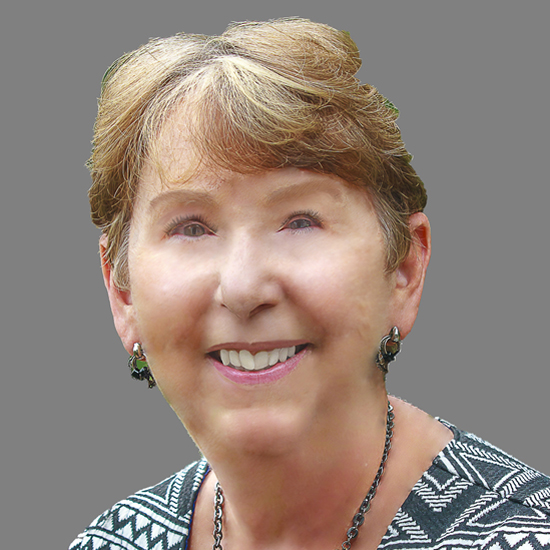
Submitted by Diane Vitillo, MS, OTR, CAPS, CLIPP, ECHMWhen I was 5 years old, polio was not part of the life I had imagined for myself. In the early 1950’s, thousands of children in the US were stricken with polio. Two of my playmates contracted the disease … but, I was the lucky one … I didn’t end up in an iron lung! My right side was paralyzed but after many years of physical therapy, I regained some function. That’s how this story begins.
Throughout my childhood and adolescent years, I developed many innovative strategies and techniques to use in order to successfully complete my daily living tasks (bathing, dressing, eating, etc.) using only one arm. I was able to share these techniques with my patients when I started my career as an Occupational Therapist.
During my 25+ year career in the rehabilitation field, I’ve worked with thousands of patients, many of whom were stroke survivors. One particular patient, whose stroke resulted in hemiplegia, challenged me to come up with a solution on how to independently put on an ankle foot orthosis (AFO - an ankle brace that prevents foot drop) using a one arm approach. There were many products on the market to help a patient complete particular dressing tasks using only one arm, but, sadly, there were no products that could help him with this particular task. Occupational Therapists love a challenge!
Many OT's must be "gifted" with an adaptive device design gene! Luckily, I was one of them. My patient encouraged me to move ahead and manufacture the product that helped him gain his independence in putting on his own ankle foot orthosis and shoe! "The Original AFO Assist" is now helping people all over the world regain their dressing independence.
-
Submitted by Morgan Fusco, MOT, OTR/L, BCP
As a pediatric occupational therapist, one of the populations closest to my heart is early intervention. It’s incredibly rewarding to not only witness babies grow and reach milestones but also to educate and empower their families along the way. One of my most memorable cases has been a preemie I started working with at just 8 months old—on oxygen, a G-tube, and unable to sit up. Over the years, I’ve watched him learn to crawl, walk, talk, and so much more. Now, at 3 years old, I still have the privilege of working with him, and it’s been amazing to watch him grow.
-

Submitted by Michael Steinhauer, OTR/L, MPH, FAOTAMy story is about the impact I believe I have had on my colleagues, not about our clients and patients this time. I have been an AOTA and state association member my entire career, starting in 1975. I was an early home health practitioner and recognized a gap within our national association, and as it related to our OT home health relationships with the home health industry. Within 3 years of graduation from Tufts/BSOT, I found myself the administrator of a Medicare certified home health agency. From that perch I rallied the OT community by establishing the Home and Community Health SIS, gathering hundreds of signatures in support while attending national conferences. Concurrently, I was elected to the Board of the American Federation of Home Health Agencies that later merged with the National Association of Home Care. I represented OT and the rehab professions at every turn, exhibiting AOTA at their national conferences, writing articles for their newsletters, and going on a nationwide tour speaking at state OT conferences about OT and home health and employment options (like independent contractor status). I represented AOTA on the JCAHO Home Care Professional and Technical Advisory Committee writing the accreditation standards for OT/rehab surveys, and rose to Vice Chair of that group. After dozens of publications, speaking engagements, and awards and distinctions, I made Fellow of the AOTA due to my contribution to the body of knowledge about OT in home health. I cried. Later, I represented OT in the county public health arena and the emergency and disaster industry, writing standards for county departments on how to best reach, educate, accommodate and serve people with disabilities.
Through all these experiences I met fantastic, smart, entrepreneurial OTs who were armed with the knowledge and competencies necessary to succeed in their OT home health practice. And I laid the roots for current practitioners who wish to contribute to their communities in emergencies and disaster.
My journey was long but rewarding as could be. And I enjoy thinking about all the therapists I met, recalling their own clients/patients who benefitted from OT, and who could begin their own journeys in this fabulous profession.
-
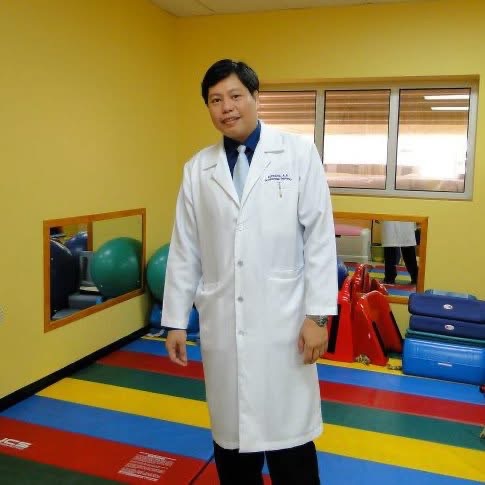
Submitted by Allen Espelita, OTD, OTR/L, CLT, C/NDT, CEAS I, CPAMBeginnings in the Philippines: Resourcefulness and Resilience
My journey as an occupational therapist (OT) began in the Philippines, where I was first introduced to the power of rehabilitation. In a country where healthcare is primarily paid out of pocket, therapy is often viewed as a luxury rather than a necessity. This reality shaped the early years of my practice, teaching me invaluable lessons in resourcefulness, resilience, and advocacy.
In the Philippines, many patients and families struggle with the financial burden of medical care. Unlike in countries with government-funded healthcare systems, rehabilitation services are often expensive, forcing patients to make difficult choices. I have met countless individuals who had to prioritize daily living expenses over therapy sessions, which meant slower recovery or, in some cases, the complete abandonment of much-needed treatment.
As an OT, I had to be creative. I learned to maximize the limited resources available, repurposing household items as therapeutic tools. I adapted interventions to be feasible within a patient’s home environment, ensuring they could continue exercises without costly equipment. The experience honed my problem-solving skills, making me deeply aware of the socioeconomic factors that impact healthcare access.
Despite the challenges, my work in the Philippines was incredibly fulfilling. Seeing patients regain independence against the odds fueled my passion for occupational therapy. However, I knew there was more to learn different ways of delivering care, innovative technologies, and broader perspectives. That curiosity and ambition led me to Qatar, a country with a vastly different healthcare system.
Qatar: A Glimpse into Socialized, Technologically Advanced Healthcare
Moving to Qatar was a transformative experience. The country’s healthcare system is socialized, meaning that the government provides medical care, significantly reducing financial barriers for patients. Unlike in the Philippines, where affordability dictated access, in Qatar, patients could receive treatment without worrying about how to pay for it. This allowed me to shift my focus from financial constraints to delivering the highest standard of evidence-based care.
One of the most striking differences was the availability of advanced technology in rehabilitation. State-of-the-art facilities, cutting-edge assistive devices, and innovative therapeutic techniques were at my disposal. I had the opportunity to work with robotic rehabilitation devices, virtual reality-based therapy programs, and specialized adaptive equipment that I had only read about before. These advancements allowed me to provide more precise, data-driven treatment plans that significantly enhanced patient outcomes.
Beyond the technological aspect, Qatar exposed me to a multicultural patient population. Working with individuals from different nationalities, backgrounds, and belief systems expanded my cultural competence. I learned to tailor my interventions not just to a patients physical needs but also to their cultural and personal preferences. In a diverse environment like Qatar, understanding the nuances of each individual’s expectations and values became just as important as clinical expertise.
While I thrived in this advanced healthcare setting, I also became more aware of the importance of holistic patient care. Despite having access to the best technology, patients still needed human connection, empathy, and motivation. High-tech equipment could enhance therapy, but the heart of rehabilitation remained in the trust and rapport between therapist and patient.
After several years in Qatar, I felt ready for another challenge. I wanted to explore how occupational therapy functioned in one of the most complex healthcare systems in the world the United States.
The United States: Navigating an Insurance-Driven System
Arriving in the United States was an eye-opening experience. The U.S. boasts some of the most advanced medical technologies and highly specialized rehabilitation programs, but it also operates within an insurance-driven system. Unlike in Qatar, where financial barriers were minimal, and in the Philippines, where payments were straightforward, the U.S. introduced an entirely new layer of complexity: insurance approvals, billing codes, reimbursement policies, and extensive documentation.
One of the biggest challenges was learning how to navigate this system while still providing quality care. Insurance coverage determined what services patients could receive, how often they could attend therapy, and even what equipment they could access. As an OT, I often found myself advocating just as much as I was treating ensuring that my patients received the interventions they truly needed, despite the bureaucratic hurdles.
The U.S. also emphasized evidence-based practice and outcome-driven treatment plans more than any other system I had worked in. Documentation had to be precise, measurable, and justified to secure continued therapy sessions. While this level of accountability was beneficial in maintaining high standards of care, it sometimes felt like it prioritized paperwork over patient interaction. I had to find a balance ensuring compliance with insurance requirements while still giving my patients the attention and care they deserved.
Despite these challenges, the U.S. healthcare system provided immense opportunities for professional growth. I was exposed to highly specialized areas of occupational therapy, from hand therapy to neurorehabilitation, pediatrics to geriatrics. The interdisciplinary collaboration was also stronger than I had previously experienced, with OTs working closely alongside physical therapists, speech therapists, physicians, and case managers. This holistic approach reinforced the importance of teamwork in patient recovery.
Lessons from Three Healthcare Systems
Each country I have worked in has shaped my perspective as an occupational therapist. The Philippines taught me resilience and creativity, showing me how to make the most of limited resources. Qatar exposed me to world-class technology and the importance of cultural sensitivity in patient care. The United States challenged me to navigate complex systems while maintaining high clinical standards.
Despite their differences, one common thread remains: occupational therapy is about restoring independence and improving quality of life. Whether in a low-resource community, a high-tech hospital, or an insurance-driven clinic, the heart of our profession remains the same. Patients need guidance, encouragement, and interventions tailored to their unique needs.
This journey has reinforced my passion for advocacy ensuring that patients receive the care they deserve, regardless of the system they are in. It has also solidified my commitment to continuous learning. Healthcare is constantly evolving, and as therapists, we must adapt, innovate, and advocate for those we serve.
Looking back, I am grateful for every challenge and every lesson. From the humble beginnings of making therapy work on a shoestring budget in the Philippines to embracing technology in Qatar and mastering the complexities of insurance in the U.S., my journey has been nothing short of transformative. Each step has strengthened my skills, deepened my compassion, and reaffirmed my dedication to this profession.
No matter where I practice, my goal remains the same: to help individuals regain their independence, restore their confidence, and reclaim their lives. And that, to me, is the true essence of being an occupational therapist.
-
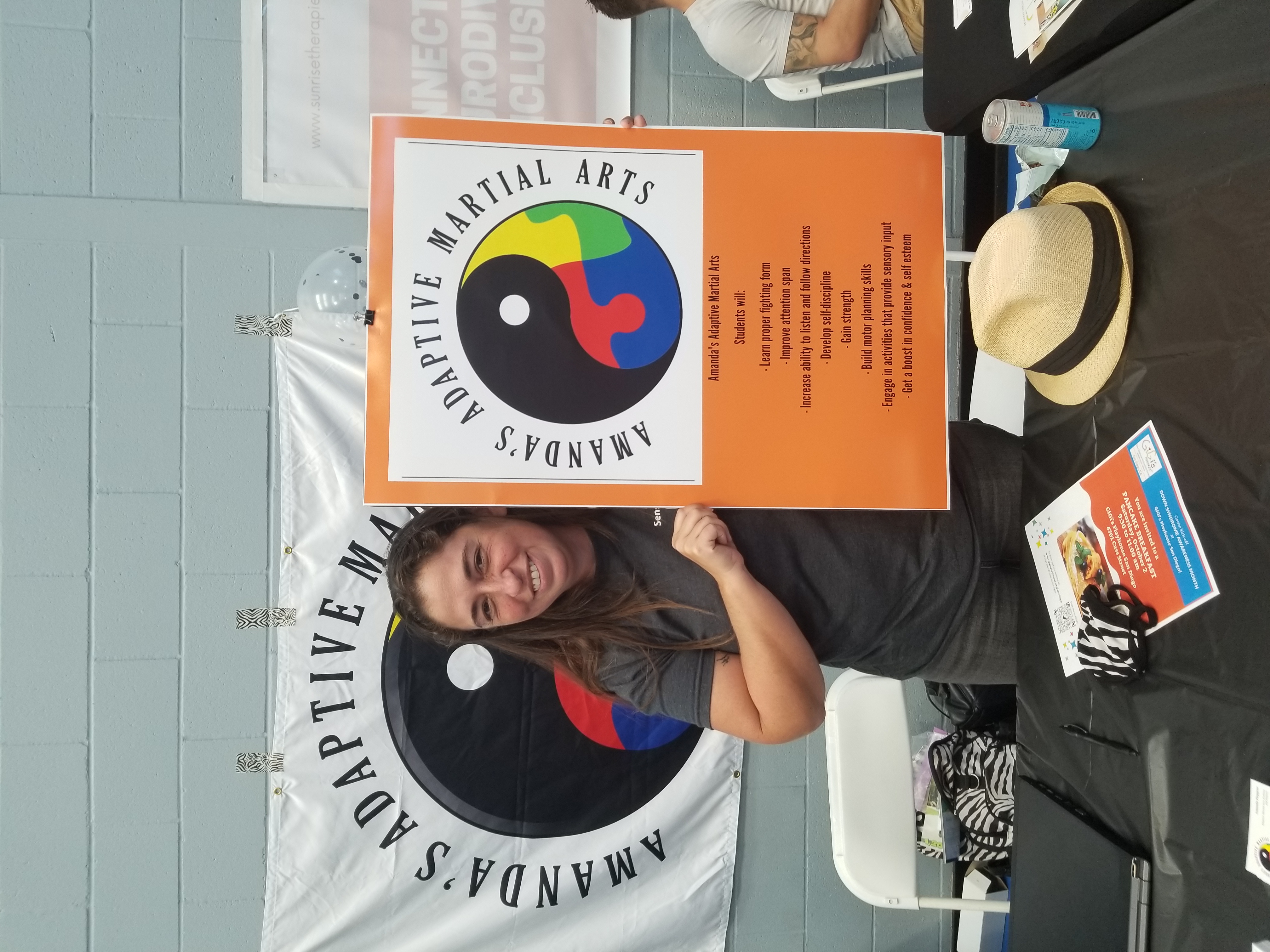
Submitted by Amanda Piepgras, COTAMy journey into the world of martial arts and occupational therapy was profoundly shaped by the experiences I shared with my younger sister, who was born with spina bifida. From an early age, I learned to navigate the challenges of supporting a sibling with special needs, taking on responsibilities that included attending medical appointments and learning specialized care techniques. These experiences cultivated in me a deep sense of empathy and a desire to pursue a career in therapy, ultimately leading to my certification as an Occupational Therapy Assistant (COTA).
College was a period of perseverance and growth, as I worked multiple jobs and took on loans to achieve my educational goals. The support I received through grants and from those who believed in me was invaluable, reinforcing my commitment to making a difference in others’ lives. As I entered the professional world, I found myself gravitating towards working with children on the autism spectrum, where I discovered the transformative power of sensory integration and behavior management techniques.
My personal journey with martial arts began as a means to improve my mental and physical well-being. The discipline not only helped manage a painful medical condition but also enhanced my confidence and social skills. Recognizing the broad benefits martial arts could offer, I was inspired to teach these techniques to children with special needs. This passion led to the establishment of Amanda’s Adaptive Martial Arts, a nonprofit organization dedicated to providing adaptive martial arts education to individuals with autism and other special needs.
Launching the organization amidst the challenges of the COVID-19 pandemic was daunting, yet it was also a pivotal moment. Parents, eager for their children to engage in physical activities, brought a wave of interest that allowed us to expand our classes across San Diego. Over time, we grew into a recognized and certified institution, offering programs for adults and young children, and even mentoring other martial arts instructors and occupational therapy students.
The recognition and awards I’ve received, such as the induction into the Martial Arts Hall of Fame and the Innovative and Emerging Practice Award from AOTA, are a testament to the impact our program has made. But the true fulfillment comes from witnessing the joy and confidence in our students and the knowledge that we are contributing to the field’s body of research. As I look to the future, my goal remains to advance the understanding of occupational therapy and martial arts, sharing its profound benefits with the world.
-
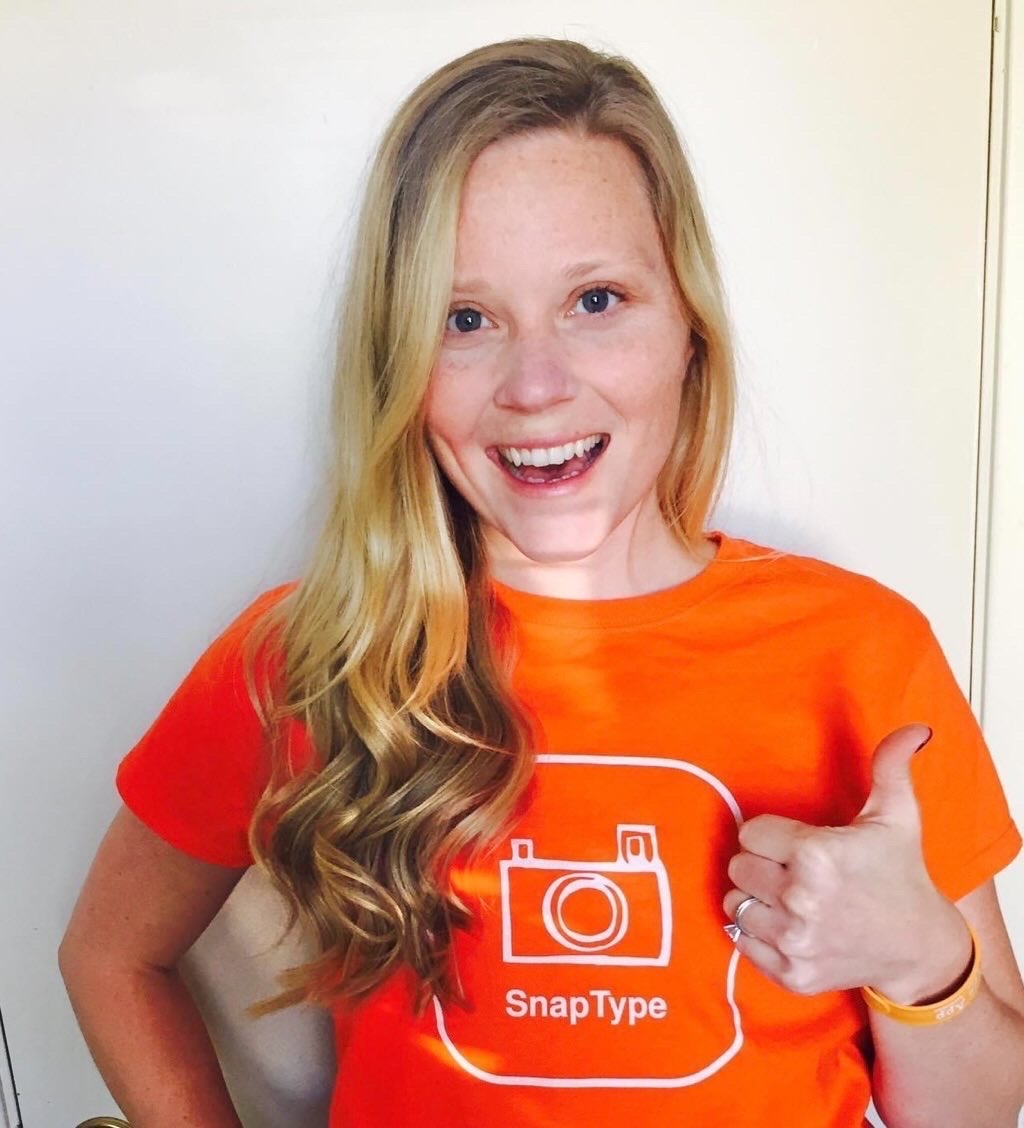
Submitted by Amberlynn Slavin, MS, OTR/LDuring my level 1 occupational therapy fieldwork, I met Steven*, a bright and determined fifth-grader who was struggling in school. Diagnosed with dysgraphia, his handwriting was so messy that no one could read it. Despite countless interventions, his occupational therapist couldn’t find a method that worked. Even scanning worksheets into a computer so he could type his answers proved too time-consuming. Frustrated and falling behind, Steven was losing confidence in his abilities.
There had to be a better way.
Then it hit me, what if he could simply take a picture of his worksheet and type his answers on the screen? I scoured the app store, but existing tools were too complex for a child. So, I sketched an idea on a napkin, shared it with Steven’s OT, and with her encouragement, I brought it to life. I collaborated with a developer, created a detailed mockup, and built SnapType App—a simple yet powerful app that allows students like Steven to complete worksheets independently.
The transformation was immediate. Steven could finally keep up with his classmates, no longer held back by his handwriting. More importantly, he regained his confidence and independence. Seeing his face light up as he completed assignments on his own was all the motivation I needed.
Today, SnapType App is empowering over 6 million children in more than 50 countries to overcome learning barriers and unlock their full potential.
Occupational therapy changes lives, and even as a student, you can make an impact that reaches beyond what you ever imagined. Never underestimate the power of one idea, one act of innovation, or one moment of determination—because it just might change the world.
*Name changed for privacy.
-
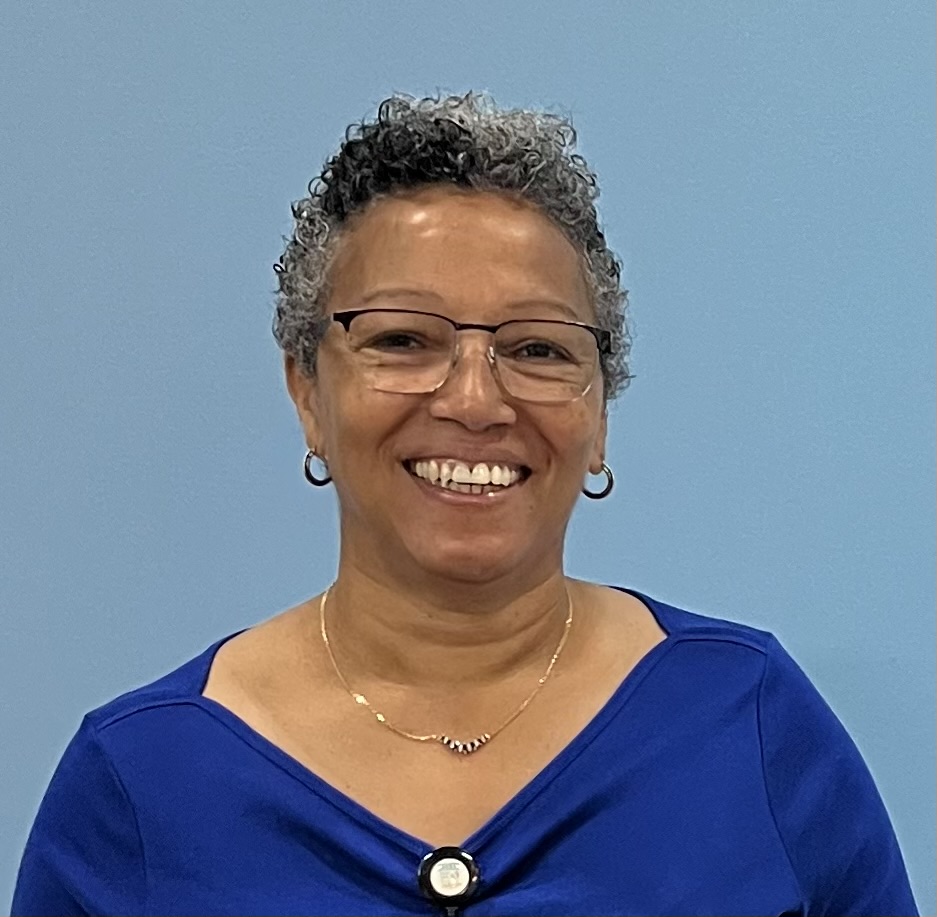
Submitted by Beth Reeves, MS, OTR/LDefinitions: organizational health literacy: the degree to which organizations enable individuals to find, understand, and use information and services to inform health-related decisions and actions for themselves and others: personal health literacy: the degree to which individuals have the ability to find, understand, and use information and services to inform health-related decisions and actions for themselves and others. (What Is Health Literacy? | Health Literacy | CDC )
November 19, 2024
Early morning missed call-my sister Stephanie had left an urgent message to call ASAP. I called. “Beth, Vern died.” Silence! “Did you hear me?” “Yes.” She explained Mom found her in the bathroom and they were waiting for the coroner. I am 500 miles away and said I would leave first thing in the morning. She called back. “We’re taking Mom to the hospital. She can’t breathe.” “Ok. I’m packing and getting in the car.”
Each day for one month is a little blurry, but the highlights in dealing with the healthcare systems are clear. I have been an Occupational Therapist (OT) for over 30 years. During those decades I have been in numerous healthcare systems in varying roles in leadership and administration. My health literacy (HL) level is above normal. Let me walk you through this experience using the lens of health literacy with an OT background.
Phase I: Hospital stay (11/14-11/27)
On the long drive from South Carolina to Philadelphia I was on speaker phone with the parade of healthcare providers (HCPs). My sister was overwhelmed by the information and the situation. She later told me when I asked questions about the cardiac enzymes the doctor looked at her as if to say, “who is she?” I was intentional about using healthcare verbiage like “troponins” because they were being very vague and not explaining the gravity of the situation to my sister. I did feel they were trying to use plain language.
By the next morning, Stephanie and I arrived at the CCU to find Mom sedated, intubated with several IV bags to manage cardiac function. My sister lost it. Despite providing staff with both of our phone numbers, they called the number in the EMR belonging to my deceased sister. Watching the CCU team interact with the cardiac team played out before us. The CCU doctors were wonderful. They were compassionate. They were open to questions. They were communicative. I thought most were skillful in explaining the daily situation, but more often than not, my family would ask me what they said after they left the room. Plain language then, needs to make information plain to those receiving the information. I encouraged my family to ask questions from the HCPs and not rely on me explaining it later. As they started to do this, I started to pay more attention and listen for plain language. The providers got better at explaining although they did not use HL strategies like images, or printed materials. The final diagnosis for my mother was Takotsubo cardiomyopathy or broken heart syndrome.
The last 24-28 hours in the acute hospital left me disappointed. I’m aware of how the system works. I’m all too familiar with holidays in the healthcare system. My mother was moved to the telemetry floor without a call to inform us. Quite a change in care. I immediately felt the staff was overwhelmed. I was talking to my mother, and she was explaining how she went to the bathroom. In disbelief I wanted more details. I put together that the therapist used a standing device to complete a toilet transfer. A few minutes later she said, “Where are these people? I am still sitting in this.” All this time she had the call light on and needed to be cleaned up. Eventually someone came after I offered to clean her myself. Strike one! I put her on the bed pan again. Strike two! Strike three, “She’s ready for discharge.” OK. Slow down. It’s Thanksgiving Eve. Beds need to be empty. Case management calls and explains she is ready for discharge and one of her three facility choices has a bed. I understand that part. My sister was alarmed because she had just been moved to this room from CCU the night before. For the non-HCP I agree this can be alarming. Three days ago you were extubated, two days ago you got a pacemaker and now you’re discharging. It seems too fast. My alarm went off after talking to her nurse who did not seem to have the clinical history. He received notice from the case manager that his patient is being discharged tonight. He proceeds to decrease her oxygen from 4 liters to 2 liters and states, “They want her off oxygen before she leaves.” To which I responded, “That’s not going to happen.”
Health Literate organizations must operate under conditions of being short staffed, holidays and unexpected circumstances. Establishing and maintaining HL attributes must be a systematic characteristic of your organization. The last 24-28 hours failed to meet any health literate measures and could have put my mother at risk.
Phase II: Short-term rehab/skilled nursing facility (11/27-12/20)
Organizational Health Literacy declined rapidly. As expected, the holiday weekend was understaffed. Got it. I was focused on trying to be a daughter and not an HCP. My family of course looked to me for guidance. I expressed that I expected her to receive OT, PT, SLP, to increase mobility, advance her diet, get rid of the oxygen, finger sticks, and discharge home. Day three of being in bed, I turned to my OT skills and sat her on the edge of the bed and had her move her limbs. I addressed the finger stick issue with the nurse and made a plan to be there in the morning. I was going home soon and needed to feel better about leaving her there. The primary physician came through after I spoke with physical, occupational and speech therapy. He started talking with my mother about how much oxygen she was on at home, her current diet, and her pacemaker. Breathe! My mother only complained about the pureed, thick liquid diet-his response was not health literate. No explanation of the speech therapy process. No explanation of how intubation and her medical condition relate to swallowing function. He asked her how much oxygen she had at home and if she wears CPAP every night. She explained that she didn’t have any of that stuff at home. He was surprised and said they would work on getting the oxygen off and speak to speech. I finally spoke up to report what speech assessed and asked about the process of titrating down the oxygen and discussed her lack of appetite.
I had spoken to the doctor, nurse, therapists but not the case manager. Now I need to speak to someone in authority and my sister made sure we did. I expressed my mother had minimal complaints of care and the staff treated her nicely. This was important to us all. I told them I am leaving and need to feel more comfortable leaving her in their care. I itemized concerns- getting out of bed, diapers, oxygen, care plan, lack of food intake and discharge planning. Had I not been there, her plan of care would not have been ideal. It pains me to feel that only because of my HL proficiency, this patient got what she needed. The facility’s lack of HL led to disjointed and uncoordinated care. Uncoordinated care has the potential to increase length of stay, poorer outcomes, and poor discharge planning.
The most egregious act happened the day of discharge. I was curious from an HL perspective as to how discharge instructions would be completed. After waiting for the pharmacy to drop medication, the nurse came in with two pieces of paper. She basically said to my mom, “here are your medications (pointing to each), “follow up appointment with your doctor on 12/27.” “Ok. Sign here.” I had to pause! I asked one question, “when should she follow up with the pacemaker?” To which she responded, “See your doctor.”
Imagine you are 87 years old, you’ve experienced the most traumatic event in life, you were in critical care, sent to rehab and now sent home with a simple list of three medications. No information about your pacemaker. No beware. No if this….than this… I was so angry and disappointed in healthcare at that moment. It may have been this nurse in particular. She beat me to the elevator because her shift was done. But that is exactly why HCP training in HL strategies needs to be universally implemented and sustained.
Phase III: My house 12/21/24-current (1/7/25)
Our situation is a little more complicated because of the move out of state. Bringing her to South Carolina added additional follow up issues. However, no one even questioned discharge issues. I cannot imagine a family left on their own to manage the healthcare system under these circumstances. What should one do about renewing medication? How should one follow up with a pacemaker? Can you use Medicare out of state? Who should we follow up with while in S.C.? Can we have home care?
It doesn’t make me feel better to acknowledge that only because of my health literacy proficiency, we were able to ask the right questions to the right people. I was able to have a telemedicine appointment with her PCP in Philadelphia. I was able to set her up with a local PCP group that does home visits and telehealth. This allowed medication refills, lab works, and pacemaker management.
The lack of using HL strategies at the time of discharge creates a higher likelihood of a patient returning for emergency care. Overuse and unnecessary use of the emergency department, and medication errors are highly correlated to the burden of cost resulting from low health literacy.
This experience encourages me to continue to tell the stories of patients who rely on HCP to help them in their healthcare journey. It emphasizes the need for me to design educational opportunities to teach health literacy principles to both healthcare providers/organizations and healthcare consumers (patients/families).
For more information visit me at: www.Health-Speak.org
-
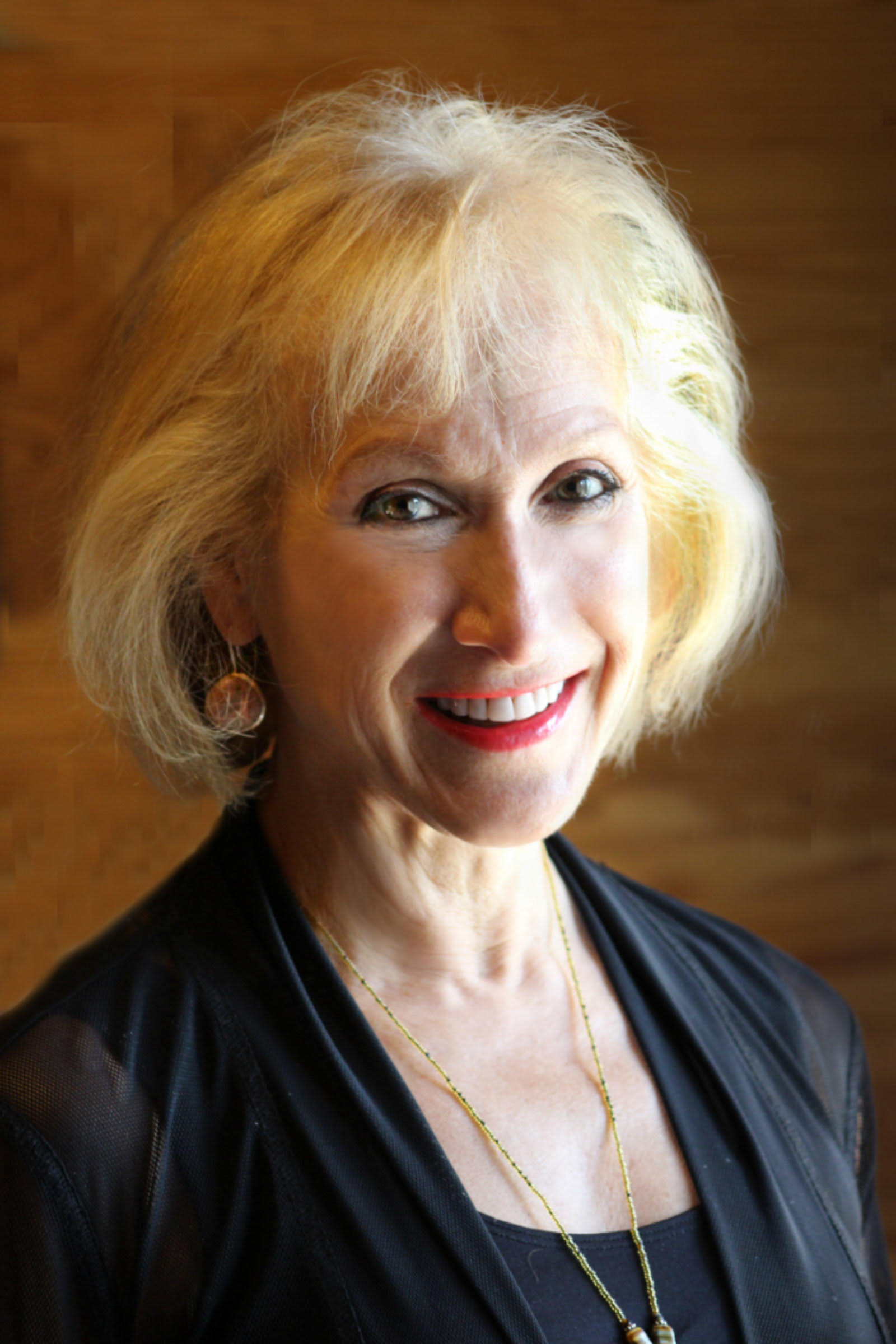
Submitted by Beverly Moskowitz, DOT, MS, OTR/L, FAOTADespite 49 years of practice, the story of Jason from my second year as an OT always jumps to mind when asked my career’s most inspirational memory.
The St. Edmond’s Home for Crippled Children (and yes… that is what they called it back in the 1970’s. It was intentionally named to elicit empathy and charity) was a residential placement for kids with severe physical or intellectual disabilities. Most were placed by families who could not meet their daily and constant needs. Some were just dropped off. Jason was in the latter group.
With spastic cerebral palsy and significant cognitive deficits, Jason spent his days in a wheelchair pushed from therapy to therapy, activity to activity, by staff who doubled as his dresser, feeder, bather, nurse, and overall caretaker. It was a lovely place where both professional and lay staff were devoted to these most vulnerable children.
One day, the psychologist approached me. She noted that among the few records of Jason when he arrived was that he was Jewish. As he was approaching teenage years, she wondered what he (and they) could be doing to honor his heritage.
Being Jewish, I immediately reached out to local synagogues to inquire if they could provide an appropriate education for him. To be honest, at the time, I was not thinking about OT’s holistic philosophy. How the OT Practice Framework endeavors to view clients in the context of ALL occupations and ALL relevant environments. How PEOP reflects the totality of one’s experiences, and their role in providing an individual with a meaningful and full life.
Rather, it was a gut reaction. Something I instinctively knew I had to do.
After a few years, I’d moved on to another job. Then one day, I received a call from Sister Urban. She was inviting me to Jason’s Bar Mitzvah. The sanctuary in the synagogue was filled with staff, a few other residents, and nuns in their habits. The portion read that week was about a census Moses was commanded to take of his followers in the dessert. Men. Women. The young. The old. The healthy and the sick. The rich and the poor. In summarizing the significance of the portion, the Rabbi intoned that the meaning was ‘Everyone counts.’ There wasn’t a dry eye in the house.
Years later, when reviewing the various models directing our outreach and intervention, it hit me. That’s what I did. That’s what they did. By enabling Jason to experience his religious roots, his life and mine, along with the many people also in attendance, have been forever changed.
I don’t know a more impactful message than that. Everyone counts.
-
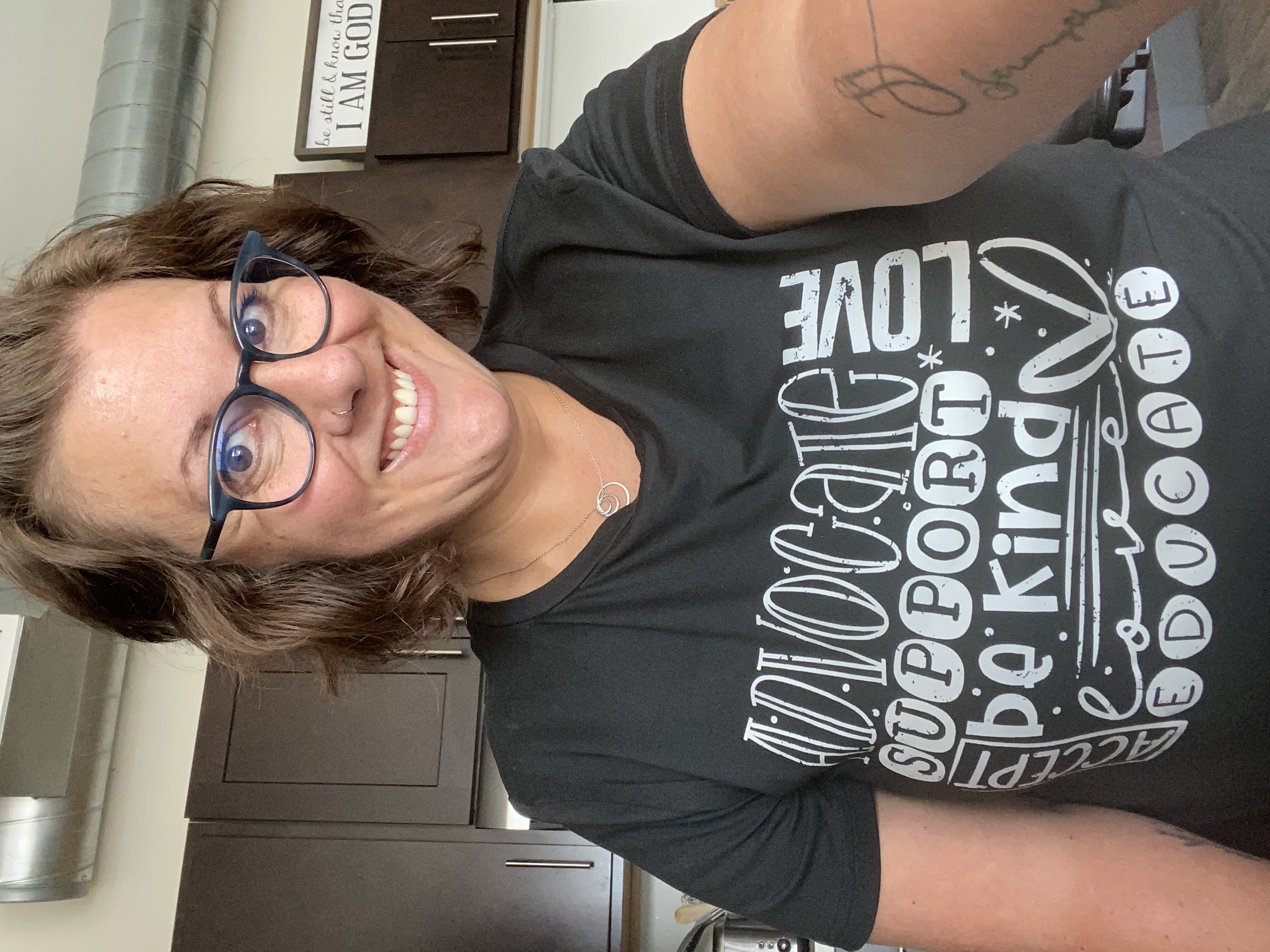
Submitted by Christie Cyktor, OTD, MS, OTR/LGrowing up with Arthrogryposis Multiplex Congenita, I quickly learned that the world wasn’t always built with my needs in mind. From a young age, I navigated life using a wheelchair, encountering both physical and societal barriers that shaped my perspective. Occupational therapy became a cornerstone of my journey, supporting me in both outpatient clinics and school-based settings. These experiences not only helped me develop practical skills but also introduced me to the power of advocacy—something I would later dedicate my career to.
Now, I use my lived experience to empower the next generation of young people with disabilities. As the Youth Training and Leadership Coordinator at my state’s Parent Training and Information Center, I teach kids about self-advocacy in school, healthcare, and beyond, helping them recognize their own strengths and the importance of speaking up for their needs. Additionally, as an independent contractor, I provide virtual school-based occupational therapy to K-12 students attending cyber charter schools, ensuring that children—regardless of their learning environment—receive the support they need to thrive.
My journey has come full circle. The very system that once supported me is now the space where I work to create change, ensuring that young people with disabilities don’t just receive services but gain the confidence and skills to shape their own futures.
-
Submitted by Cynthia Richardson, OTR/L
In 1978 I became a licensed OTR and a member of AOTA. Over the years I have worked in a variety of healthcare settings. I have maintained my license since retiring 11 years ago. My desire was to be able to serve my community where I have resided for 44 years. The community has gradually changed economically due to changes in demographics. I am determined to be a part of the solution to improve the lives of the residents using my skills as an OTP. To work with our youth was my decision, because they are the future. In 2018, I founded the Youth Financial Literacy Assoc., Inc.(YFLA). It is a not-for-profit.
YFLA was founded to provide youth in low socio-economic communities free workshops and classes to learn basic, daily money management skills. All persons involved in the organization are volunteers. Two other OTP's have assisted in establishing and providing services for our youth. We were honored to have our article "Combating Poverty Through Occupational Therapy" in the May 2024 Issue of OT Practice Magazine.
On a personal note, my skills as an OT has allowed me to work with my son who is ASD to become an independent and productive adult in today's society. In 1989 at 2 years at 6 months of age he was diagnosed APD with deviant behavioral manifestations consistent with the autistic spectrum. The summary of the evaluations stated that he had a severely restricted and disordered development of language comprehension and production, low average intelligence and a borderline level of social adaptive function.
Because of my skills as an OT, I was able to recognize my son's signs and behaviors to confer with my pediatrician and insist for a referral for an early evaluation to determine what interventions would be needed. My skills also allowed me to collaborate with his teachers and other related professional caregivers to provide effective programming in academic and home settings. The home programming was provided by me using a systems approach of OT Frames of Reference. From preschool throughout high school, I worked with all the professionals for my son to become independent Basic ADLs and IADLs. If it were not for early intervention and consistency in therapeutic approaches the goals would not have been achieved.
-

Submitted by Haley Hodge, MOTR/L, ADHD-RSPMy journey in occupational therapy began in 2010 when I became a Certified Occupational Therapy Assistant (COTA). For the first decade of my career, I worked in adult rehabilitation, gaining valuable experience and honing my clinical skills. While I loved my work, something was missing. When I transitioned to pediatrics, everything clicked—I had found my true passion.
This realization led me to take a leap of faith and return to graduate school to become an Occupational Therapist (OTR). Along the way, I faced my own personal challenges, particularly in managing ADHD, a struggle I had navigated my entire life. Understanding firsthand the impact of going undiagnosed for so long fueled my determination to specialize in areas that support children with ADHD, autism, and sensory processing differences.
Now, I’m on a mission to earn as many pediatric therapy certifications as I can, including reflex integration and other evidence-based interventions, to better serve children of all abilities. But beyond that, I want to be an advocate—not only for kids who, like me, may have gone undiagnosed for years, but for all children, including those with physical disabilities and complex needs. I also strive to be a resource for teachers and parents, bridging the gap between therapy, education, and home life.
Every child deserves to be seen, heard, and supported in a way that empowers them to thrive. Through my work, I hope to inspire hope and change lives—just as occupational therapy has changed mine.
-

Submitted by Jaime Spencer, MS, OTR/LI was getting a lot of referrals for OT evaluations for children with severe dyslexia. When I screened their ocular motor skills, so many couldn't move their eyes smoothly! I presented this information to my director and asked to implement an OMG (Ocular Motor Group) as a multi-tiered system of support. She said yes! We have been running the group for 14 weeks now, and 7/8 of them made significant progress on their standardized reading or math scores. One of them improved by 187%.
I love how running this group has expanded people's (teachers, parents, and administrators) opinions of OT in the school setting. We are more than just handwriting teachers or sensory helpers - we find problems and use our creative skills to solve them!
-
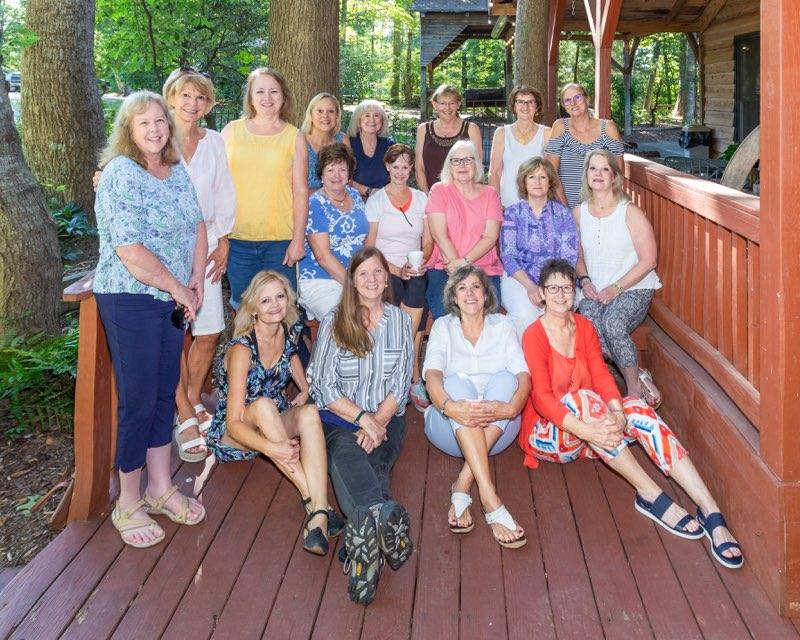
Submitted by Karin Taylor, OTR/L, OTDWe graduated as a Bachelor's Degree level class of 31 new occupational therapists, with only one male in the class, in 1979 from the Medical College of GA. One classmate continued on to dental school and one went into health care management, but all the rest served their entire careers as OT's and are just now retiring. Two served in the military. At least three opened their own pediatric therapy clinics, one overseas. Many changed jobs every year for the first 5 years before settling into a specialty. Many went to work in schools after they had children of their own. At least two present at conferences internationally, and have published articles. At least three completed OTD programs when these became available. At least two have passed away. We have kept in touch over the past 46 years and get together for mini-reunions every now and then. What a great profession and a wonderful group of lifelong friends!
-
Submitted by Kelly Webster, DPS, OT
I was a swim team swimmer starting at age 8 and swam competitively through high school and college. As part of our extracurriculars in college, I was part of a swim/gym program at the North Adams MA YMCA. One day I was there and a group of adults with CP were in the pool. When they got out of the pool and walked on the pool deck, I couldn't understand how they could move in the water more smoothly than they could walk on land, nor did I really know much about Cerebral Palsy. Those images and thoughts stuck with me. That lead me to eventually wonder about physical therapy, occupational therapy and rehabilitation. Until then, I was a psych major with a concentration in neuroscience and no knowledge of occupational therapy. It wasn't until I already graduated college and then went to observe at a rehabilitation facility in my home state of CT that I talked with and observed an OT. I knew then I would apply to graduate school for OT and I did receive my Master's in OT and then 10 years ago now, my doctorate. I have been a working OT for 29 years now and have no regrets of the career that I have chosen. I pride myself on restoring function in people.
-
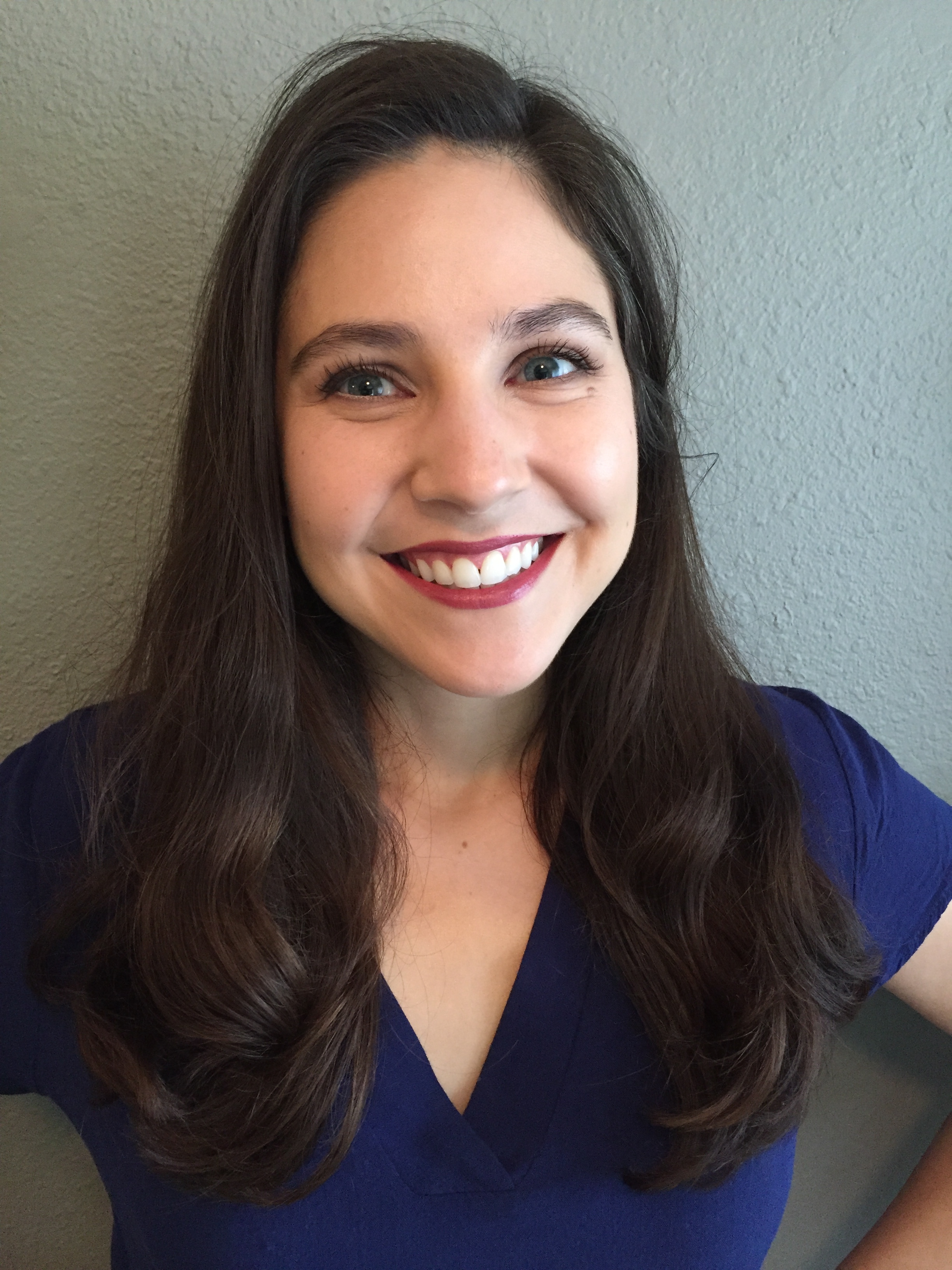
Submitted by Maria Lindbergh, MOT, OTR/L, ECHMWhen I worked in SNF and acute care, my colleagues knew me as the OT who always wrote toileting goals :) It was important to address this touchy topic with patients because they felt more self confident when they could go to the bathroom on their own.
One of the first patients I worked with had the worst elective knee surgery experience in the hospital. She got an infection in her knee and had an allergic reaction to an antibiotic medication, which meant more pain and time in the hospital. The pain and body weakness caused her to need help with everything from dressing to getting cleaned up after using the toilet.
During the evaluation, we were in the bathroom talking about toileting. She tearfully told me, "You don't know how ashamed and alone I feel. I hate relying on someone else to clean me up." Her words made me realize how the inability to take care of herself on the toilet affected her emotions and self-esteem. I made toileting a top priority in her plan of care in order to make her feel more like herself.
After helping this patient figure out the right positioning, adaptive equipment, and environmental modifications for her needs, she was able to go to the bathroom on her own again! She quickly recovered and returned home with the knowledge and skills needed to clean herself up on the toilet.
I’ve had similar experiences with so many other patients in this situation, and it always gives me deep satisfaction knowing that I’m helping people navigate one of the most humiliating, taboo Activities of Daily Living out there! I enjoy affirming my patient’s toileting experience and keeping a sense of humor to make things less awkward. I love to tell patients, "I've got your backside!"
-
Submitted by Megan Landreth, M.S., OTR/L
My story is unique. I knew what I wanted to be in 7th grade! My entire scholastic career was to get myself into graduate school to become an OT. Fresh out of college, I was accepted to a program and couldn’t be more excited. It was 9 hours from what I knew as home. I moved to a new state without knowing anyone by myself. The program I began was an accelerated program. Within one year of this program I was diagnosed with with ADD, MDD, GAD and OCD. My grandmother passed away and my Mom was hospitalized numerous times for various reasons and came close to passing away. This lead to my academic downfall resulting in my academic dismissal from the program. That year, I didn’t communicate with the faculty and viewed them as robots without feelings or compassion which was a big mistake on my part. During my last final I had studied and prepped hard, but failed to tell my professor that while my mom was visiting me I had to take her to the ER the night before the final and was in multi-organ failure. I sat for the final and my brain had completely frozen and I sat staring and crying at what looked like gibberish in front of me.
My heart was completely crushed when I was dismissed and I had never felt so heart broken in my life. My dreams were crushed. But it didn’t stop me from continuing my journey. I had just gotten a taste of the knowledge that I yearned for.
I had to apply through OTCAS 2 additional rounds. Unfortunately it was like applying for a job as a felon; I had to check the box that I had been dismissed from a school and provide an addendum. First round I didn’t get a single interview. Second round I got 1 interview and was waitlisted for a not yet accredited OTD program. I paid the deposit, visited in person and was on the edge of my seat. The school year had already began and I hadn’t heard anything so I began my 4th OTCAS application.
I received a phone call on a Thursday morning in September from Erie, PA. Thinking it was a telemarketer, I answered annoyed. I was shocked to hear the sweetest voice on the line. It was a woman in admissions from the sister school of the OTD program that I had been waitlisted for. She shared with me their program was a master’s program and was not accelerated. She said to me, “Megan, I know you didn’t apply for this program. However, we have a seat available for you in our current cohort and it’s yours if you want it!” I screamed! In that moment I felt all of the emotions. She said, “The kicker is, classes began yesterday and you would need to be here by Monday.” Keep in mind this is a Thursday. I was living with my parents in SC. After many conversations, the admissions team agreed to let me begin in the following year cohort, so that I wouldn’t be behind in my school work.
Had it not been for answering the phone to a telemarketer I would not be where I am today! I thrived in my program! I worked for incredible companies during my long term fieldworks and now I am living my 7th grade dream!
-
Submitted by Michele Johnson, OTD, OTR/L
My daughter has been my inspiration to advance my occupational therapy (OT) skills and advocate for OT in behavioral health. While working at the school she attended in the third grade as an OT, my daughter was diagnosed with obsessive compulsive disorder (OCD) and Anxiety. Over the years I have learned to navigate health systems and special education systems and the lack of understanding of OT’s role in behavioral health and the occupational injustice my daughter experienced as a result to not having access to the services she desperately needed. This was my first step in advancing my skills as an OT. In 2014, I went back to school to obtain a Post Professional Doctor of Occupational Therapy. The focus of my research and Capstone was on adolescent mental health and the development of community reintegration programming following partial hospitalization. I advocated for this program while serving on a patient and family advisory council for a partial hospitalization program my daughter had attended multiple times. While this program was not implemented, the advocacy influenced the group’s understanding of OT’s role in behavioral health.
By the time my daughter was in her second senior year in high school she was unable to get out of bed due to severe depression. I used my skills of activity analysis to engage my daughter in daily occupations. At the time, she completed online school in her bed. She did this because we worked to match the demands of the activity to where she currently was at and was not getting up and leaving the house. As a mom, it is hard to separate the OT mind that is so deeply ingrained. I know that I cannot be my child’s OT, but there are parts of my parenting that were completely done based on my OT skillset. During her school age and high school years and into young adulthood I have been my daughter’s biggest advocate. I advocate for her to engage in what she wants to do and what she needs to do and that includes working with the professionals that are necessary to meet her behavioral health needs. I will sheepishly admit that I have stepped in as her job coach when the system has failed her so that she can continue to move forward on her path of recovery.
While the behavioral health professionals have come and gone more frequently than I’d like to even admit to, one thing that is constant are the occupations that my daughter wants to and needs to engage in at any given time. Her drive to live independently in her own apartment has been another inspiration for me to watch unfold over the past four years. Behavioral health recovery does not happen in a linear fashion, and we have had to implement activity analysis to tackle the dishes or garbage that have not been touched for several months. My daughter has taught me a lot about the power of occupation when the motivation to engage is hampered by mental illness. I have learned that the skill of the occupational therapist allows an individual to dip their toe into the occupations that are most meaningful to them which allows them to move forward toward a path of healing.
My OT practice in recent years has switched to meeting the needs of individuals struggling with behavioral health. Since 2022, I have worked in adult partial hospitalization at a local hospital organization. I also have provided outpatient programing, which I advocated for and developed. This programming focused specifically on meeting the needs of individuals who needed continuation of service after hospitalization or collaborative care alongside traditional outpatient psychiatric services. Since the beginning of 2025, I have moved on to assist with the development of an OT program for a residential facility which focuses on the treatment of individuals with co-occurring mental illness and substance use disorders.
The power of my work as an occupational therapist is truly amazing as I am honored to see the journey of recovery through the eyes of my client’s. The sense of autonomy and self-efficacy that someone demonstrates when they engage in an occupation that is meaningful to them is remarkable. Even as I reflect on my own journey as an occupational therapist, and the inspirations I have had along the way, I can see the power of my own occupations and the role that they have played in my growth as a mother and an occupational therapist.
-
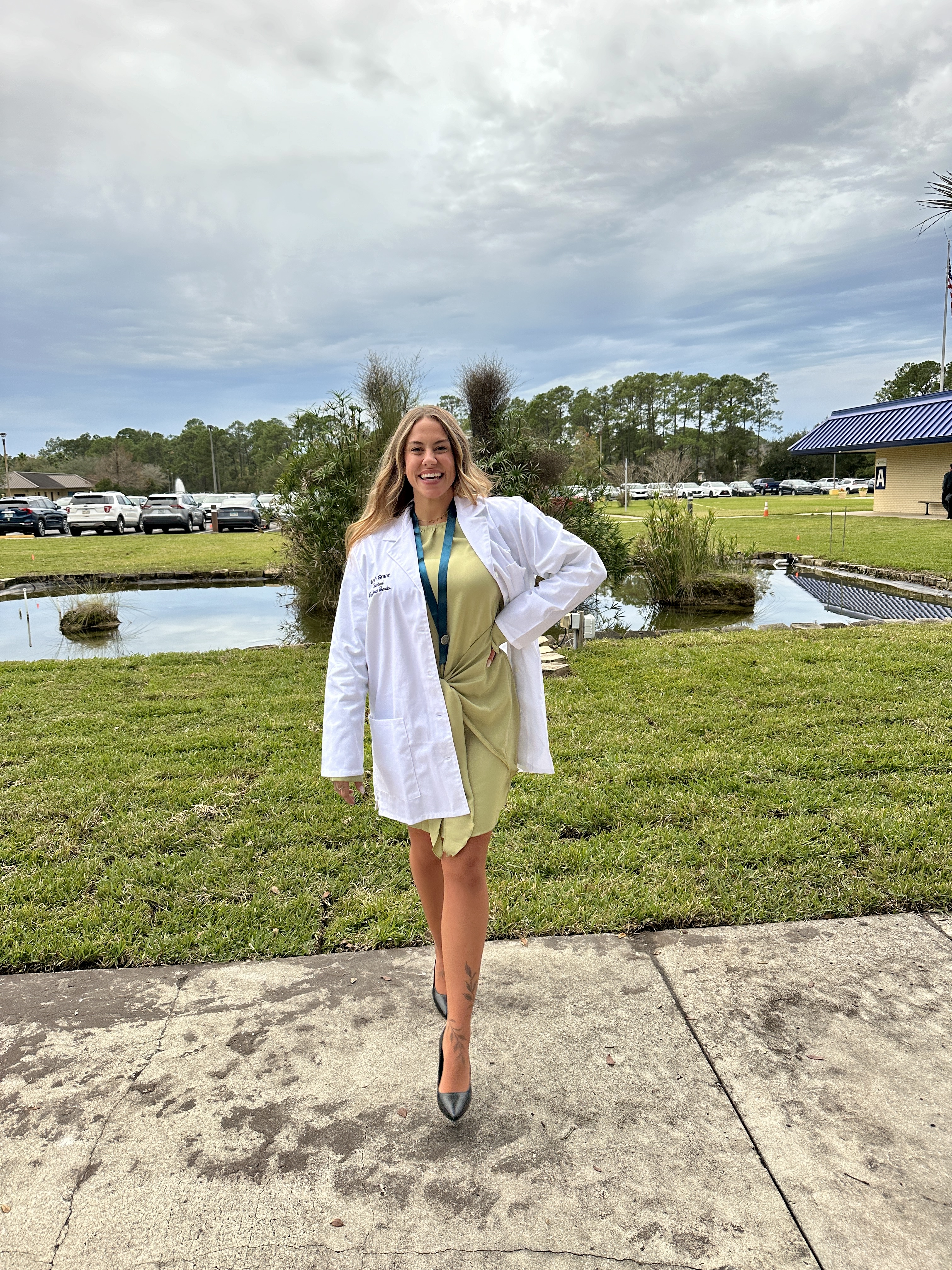
Submitted by Nyah Grant, MSOT, OTR/LI am the regional executive director at Creekside Recovery Group. The company operates mental health and substance use partial hospitalization programs/intensive outpatient programs designed to help individuals maintain recovery and redefine their lives. I use my Occupational Therapy lens to help develop treatment plans and interventions that support clients in successful transitions back into society during and after completing PHP/IOP. I oversee and work along side case managers and licensed mental health counselors and social workers to create impactful treatment plans to increase clients participations in daily occupations. I educate my teams on the important of participation in daily purposeful occupations for sustained recovery. I also use my OT knowledge to establish strong team cultures and leadership within each facility.
-
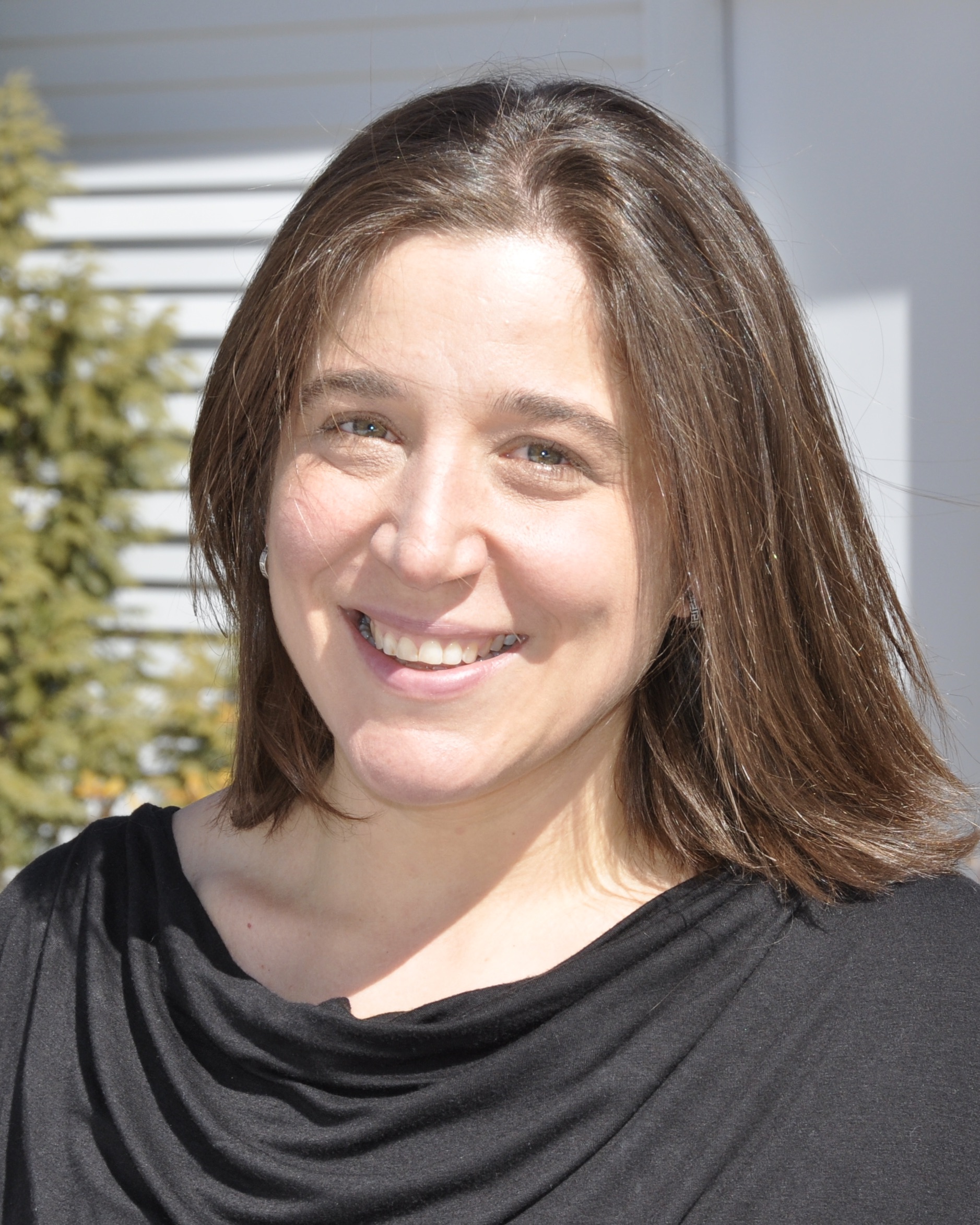
Submitted by Tara Mansour, OTD, MS, OTR/LAs we celebrate Occupational Therapy Month, I find myself reflecting on the path that led me here - a journey that began over two decades ago as a practicing clinician and has since evolved into a mission to prepare the next generation of OT practitioners. From my early years in school-based practice to my transition into academia, I’ve learned that the essence of OT is not just about what we do but about the hope we bring and the lives we change.
From Clinician to Educator: A New Way to Make an Impact
My career began with a passion for helping individuals achieve independence in their daily lives. Working as a school-based occupational therapist, I saw firsthand how our work fosters resilience, confidence, and opportunity for youth and their families. I loved the one-on-one interactions, the problem-solving, and the ability to see the direct impact of occupational therapy on my clients.
But as the years passed, I felt a growing pull to expand my influence beyond individual treatment sessions. I wanted to shape the profession in a way that would not only impact my clients but also the future therapists who would follow in my footsteps. That desire led me to academia, where I could inspire and support students in their journey to becoming OT practitioners.
Redefining Fieldwork: Creating Meaningful Learning Experiences
As the AFWC, one of my primary focuses in academia has been transforming fieldwork education. I’ve had the privilege of working with students, faculty and our clinical partners to reimagine the learning experience, ensuring that it fosters confidence, professional identity, and clinical reasoning.
Through the creation of innovative fieldwork models, such as the integration of hands-on clinical opportunities earlier in the curriculum, problem-based learning approaches, and structured peer mentorship. I have worked to bridge the gap between theory and practice. By focusing on professional behaviors, self-reflection, and scaffolding support for learners, we are empowering students to thrive in real-world settings.
Harnessing Generative AI: A New Frontier in OT Education
As occupational therapists, we are constantly adapting to new technologies that enhance our practice. One of the most exciting changes I have embraced is the integration of generative AI in OT education. While AI cannot replace human reasoning or clinical judgment, it can be a powerful tool to support intervention planning, provide real-time feedback, and enhance critical thinking.
Through my research and national presentations, I have explored how generative AI can assist students in their learning while maintaining ethical and professional standards. By incorporating AI thoughtfully, we can help students develop essential problem-solving skills and prepare them for the evolving landscape of healthcare.
Inspiring Hope, Changing Lives
At its core, occupational therapy is about possibility. Whether we are helping a child develop the skills they need to thrive in school, supporting an individual recovering from an injury, or mentoring the next generation of therapists, we are in the business of hope.
As I continue on this journey in academia, my mission remains clear: to inspire and equip future occupational therapists with the skills, confidence, and vision they need to change lives. Whether through innovative fieldwork models, the integration of emerging technologies, or mentorship, I am committed to shaping a future where occupational therapy continues to evolve, adapt, and make a profound difference.
This OT Month, I celebrate not only the work I have done but also the students, colleagues, and practitioners who share this journey with me. Together, we are building a future that honors the heart of occupational therapy - where we inspire hope and change lives, one practitioner at a time.
-
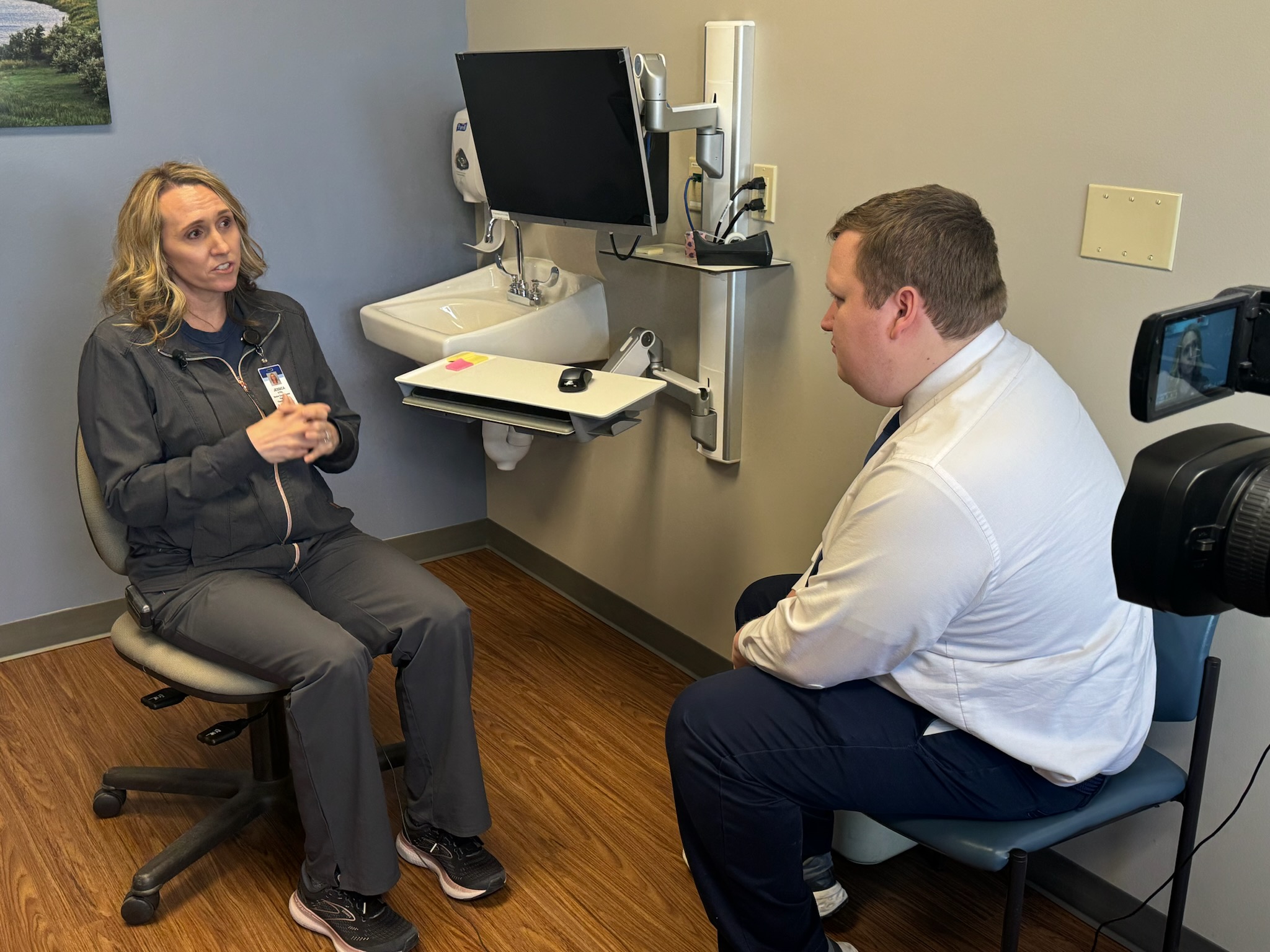
Submitted by Jessica Tweten, MOTR/LI have been an Occupational Therapist for 19 years. I have worked on Sanford Health in Fargo for 13 years. I work in outpatient adult neuro. Last fall our manager reached out to us about learning about a potential new treatment for stroke survivors, Vivistim. I was very interested in this new treatment and took every opportunity to learn more about it. I traveled to Minneapolis in December for a full day of training and watched numerous videos. I immediately thought of one of my current patients that I felt would be a great candidate for this procedure. I performed the assessments and spoke with the Vivistim reps who also felt that he would be a good candidate. He ended up having the procedure two weeks later. I started seeing him for his 6 week VNS paired therapy protocol the last week in December. The protocol is pretty intense, 3x/week, 90 minute sessions, for 6 weeks. I was able to manage getting this patient seen by me for the full 6 weeks with the exception of 1 day, by getting creative with my schedule and working outside of normal work hours. This program is all about function. The patient performs salient functional tasks with high repetitions. It hits at the core of what Occupational Therapy is. This patient had great success after his 6 weeks of intense VNS therapy. He improved on the Fugl-Meyer assessment from 49/66 to 60/66. He met his most important goal of being able to cut meat. His shoulder ROM improved significantly where he is able to reach his arm up and hold a nail to pound a nail into the wall without much difficulty. This patient is the first patient in North Dakota to have this procedure done and I would say that it is a success. He is hoping to return to work as soon as he gets clearance from his physician. It is so successful that the local news decided to do a media story. It has been an honor to be a part of cutting edge technology that has been life changing for patients and we look forward to helping more patients and advocating for OT services.
-
Submitted by Sridevi Surampudi, OT
Well, my story is kinda long spanning 3 countries!
I graduated from GS Medical College affiliated to KEM Hospital which is considered the #1 Medical College; Bombay University, India. Interestingly it is the first OT school in India. I started working as soon as I finished my internship following graduation. First part time for about 6 months until I got my Full Time job.
This was at another prestigious Medical Hospital, Nair Hospital which was another reputed Medical College-TNMC. Rotated through several departments of the hospital including Inpatient and Outpatient working here. Fabricated splints as needed. Enjoyed my learning experience of Rheumatoid Arthritis. Weekly RA clinics were led my a top-notch Physician/Doctor specialized in the same. Worked with a wonderful group of OTs with whom I am still in contact. Including my best friend 😀
Also, while working here I was able to complete my Masters/Post Graduation in OT. This program was offered as a benefit to us because we were employees at this College & Hospital. I enjoyed the program and found it fulfilling.
After some years, my essential nature got a little restless with the routine. I resigned and I ventured into Private Practice and Home Health. I liked it but found it a little exhausting to keep up with my visits to different places. Yet, I still enjoyed the experience of providing treatments and making a difference in the patient’s home setting.
Then, suddenly out of the blue, there came this opportunity to move overseas and work in USA. All expenses paid!! Strangely, I never had a desire nor the goal to go to USA, for the simple reason that I was too attached to my family. And very happy with my life exactly where I was, all things considered.
It was my best friend Sanchala K who encouraged me. She is more academic and was keen on exploring their institutions etc. I too love learning. We decided that we would avail of the opportunity only if we went together and returned to our beloved native India after 2 years.
So it was that we indeed left together in May 1993 and landed in this country. We had signed a contract and came to work on the H1B Visa which only highly skilled professions qualified at that time. Anyway, our job happened to be in Little Rock, AK in a SNF. Needless to say it was a bit of a let down from our very high expectations of USA. Anyway, we worked very sincerely, devotedly as we always do. Alongside we also prepared for the OTR certification, including attending a few workshops. We cleared the exam at our first attempt with good scores. We did a small celebration-just the two of us!!
Soon both of us got restless for more challenging work. And as luck would have it, somebody alerted us about 2 vacant positions waiting to be filled at a Rehab Hospital in West Virginia. We were called for an interview and put up in a fancy historic hotel for the weekend. Again, all expenses paid. They gave us a tour of the hospital and of course did the interview also. We were hired. The day we landed there, the city experienced its maximum snowfall after several years. We loved it but also hated it! This was In Parkersburg, WV.
We both simply loved loved working here. We rented a Townhouse close by. My friend worked for the Inpatients while I for the Outpatient Dept. In fact, I had to start their Outpatient Dept. We were single then, and very willing to help out if therapists were unable to come to work. We participated in all the learning programs they had. We also fully enjoyed our first experience of Fall-it was so so beautiful that words are insufficient to capture fully the glory of 12-14 shades of colors. Joy oh joy 😀👏.
Two years sped by. Strangely, we, the two of us who were determined to return to our beloved India-found two wonderful educated men, who proposed! So, six months apart my friend Sanchala and myself, both got married after completing the contract of 2 years. A lot of our hospital staff attended my wedding in Pittsburgh. My friend got married in India.
I received Clinician of the Year Award in my second year here.
Then I moved to Wichita, KS. I worked at a SNF because the Hand Center was far away from where we lived. It was an OK experience. I always like to give my best wherever I work. Soon, after about 7 months, my husband accepted a job in CA and we moved to Palmdale in the Antelope Valley. He commuted to the base while took up a job in the main hospital the Antelope Valley Hospital on the Sub Acute Floor.
While living here, I was requested in several set-ups-outpatient, Hands, Acute Care, SNF Adult Day Care Facilities, Home Health. I worked with a wonderful COTA-her name is Rowena Nova. I used to refer to her as a Supernova! It was an OT/COTA team that one would dream of. The professional satisfaction was total!!
I was a DOR for sometime-about 2 years. About that, another time.
In 2005 my husband got an opportunity to work in London, UK as part of his USAF team promoting research in Europe. Although I visited him as possible due to my work and family commitments back in CA, I officially joined him in 2007 after my mother passed away. My children too.
In the interim time before I joined my husband I worked on doing the License to work in UK. So, when I officially landed in London, UK I started looking out for jobs. Their system is different from USA. So, it was somewhat confusing for me to go about actually getting a job. They have a hierarchy and it’s classified into Bands. Fortunately because of my experience and interviews they put me in a decent ‘Band’. Well, I took up short term jobs because my family went on frequent trips in Europe. Needless to say, everywhere I went I’d look out for Rehab/OT signs indicating some kind of practice going on there.
In UK-I mostly worked in Hospitals. Some of them were old hospitals. But to me it was all about learning and giving/providing service. So, I would do pretty much whatever was asked or expected of me. They are still very big on Home Health, Home visits. An aide would always accompany me. It was always that 2 people should go. Never one, for safety reasons. Also, the OT had the last word on discharging a patient. Certainly when I worked there, and in the hospitals I worked. No patient could be discharged until the OT said so. Made sense in a way. Which is why OTs had to do the home visits to make sure patient can manage safely at home, if any family member/CG available to help. And if so, how many days, hours etc. Also, here in UK OTs had a big role with Adaptive equipment, DME, assistive devices etc. Don’t feel like going into details here.
Most of the time I had a good relationship with the OT staff. Only a couple of times I experienced some resistance. The last place I worked-they were all lovely people, who embraced me as their own. And even gave me a little party and a small gift which I still have!
All staff in UK wear uniforms. They differ, or rather identified, by different colors. We OTs had our white tops on of any style/design-as long as the collar is green. I guess then, that the collar is a must!! I still have it. I travelled all over by trains and buses. The one hospital closer to my house, I used my car to commute.
Back from UK in 2007, instead of returning to CA, we landed up in Dayton, OH. After I got my License to work here-I did per dime work in a very fancy hospital very close to where I lived. It was in Acute Care. I liked working here. The staff were all good and friendly.
Back to CA after 4 years. Home Sweet Home. Helped out some here and there. Pretty much retired after the Pandemic. The spirit is willing but the flesh is weak 😔
All through I have loved OT passionately. What a beautiful, glorious profession to be in!!
In CA as also in WV, I was officially asked to speak and advocate for OT. I have spoken patiently educated doctors about it. For OT month I used to somehow get them involved for greater understanding. One year I left hand-outs of a quiz re OT and related. Surprisingly, they participated very enthusiastically. With a competitive spirit!
I was asked to speak in a couple of middle schools. The students showed a lot of interest and asked very good questions. I received a whole bunch of ‘Thank you notes’ from them a few weeks later (probably initiated by their teacher) which was very touching to me. And very interesting notes too. I have them still today 😀
Well well! Better end here. Precious memories 🙏